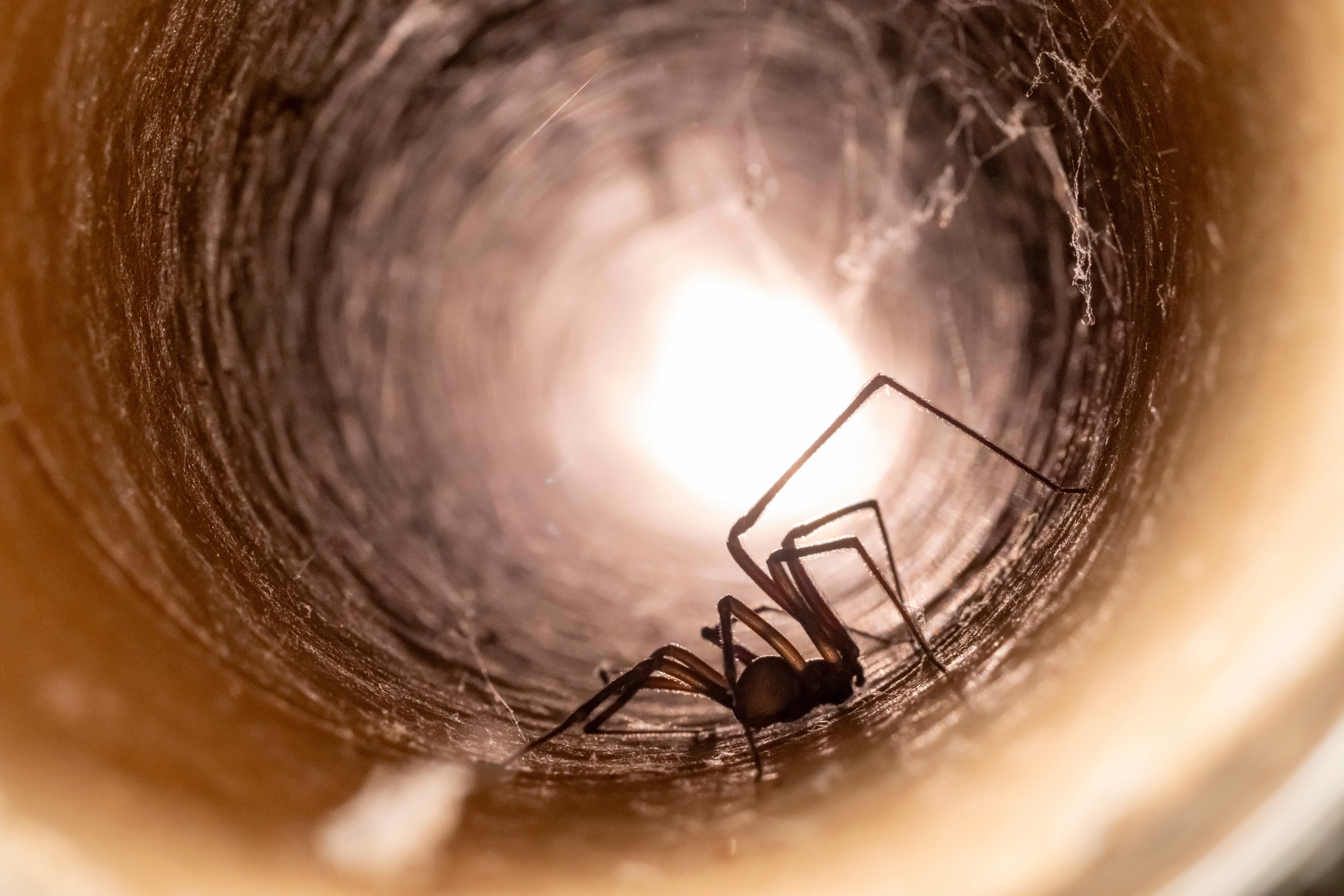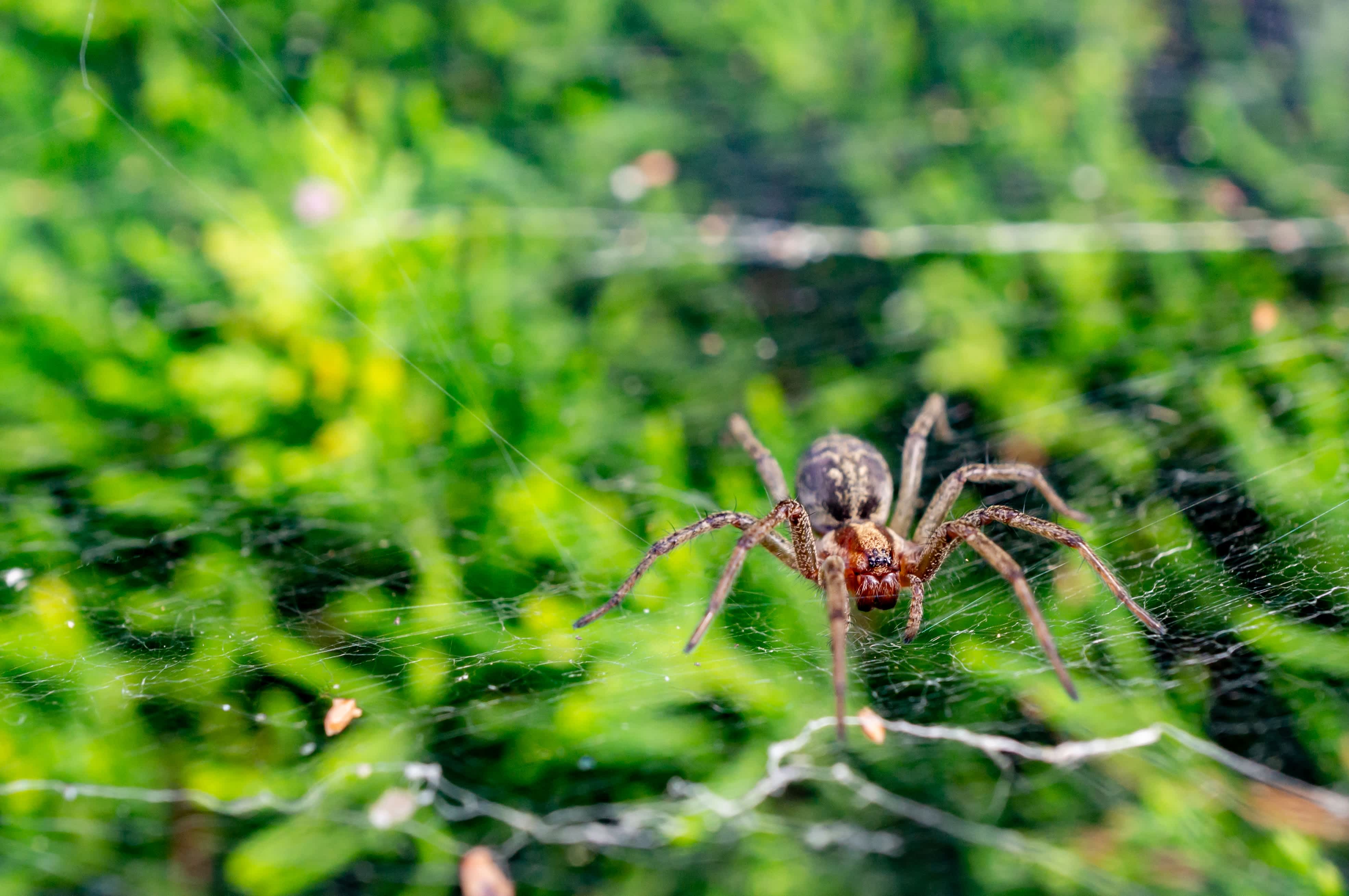
The average roach exterminator cost is between $100 and $600, depending on the species, infestation severity, and home size. Read on for a cost breakdown.
Grass spider or brow recluse? Spot the difference


Grass spiders weave large funnel-shaped webs outdoors, while recluse spiders weave messy or no webs.
Both types of spiders have venomous bites, but grass spider bites are not nearly as dangerous.
Grass spiders live about one year; recluses can live up to ten years.
Spotting a spider indoors can be unnerving, but not all eight-legged visitors pose the same risk. Grass spiders are speedy web builders that mostly keep to themselves, while brown recluses are infamous for their venomous bite. The trouble is that the two look a lot alike. Learning the differences between grass and brown recluse spiders will prepare you to deal with your next sighting.
| Type of Spider | Grass Spider | Brown Recluse |
|---|---|---|
| Size | 1 inch | 1¼ inches |
| Color | Brown, gray, black, or beige, often mixed; two dark stripes down abdomen | Light brown to grayish; distinct violin-shaped marking |
| Appendages | Long spinnerets at tip of abdomen | No spinnerets |
| Eyes | 8 eyes in two rows | 6 eyes in three pairs |
| Habitat | Outdoors in grass, foliage, corners of structures; males may wander indoors | Indoors in dark, undisturbed spots like closets, basements, sheds |
| Webs | Large funnel-shaped webs | Messy, off-white silk or sometimes no web at all |
| Bites | Venomous but not dangerous; may cause itching/swelling; higher risk | Venomous and dangerous; can cause necrotizing wounds; seek medical attention if bitten |
| Lifecycle | Lives about 1 year | Can live 5–10 years |
| Prevention | Mow lawn, trim vegetation, seal cracks, remove webs near home | Shake out shoes, clothes, towels; use gloves with boxes; call pest control if infestation suspected |

Grass spiders and brown recluse spiders are often mistaken for each other because they share similar size and coloring. Despite the resemblance, however, their behaviors and the risks they pose are very different.
Grass spiders usually measure 0.3 to ¾ inch in body length, with legs adding another ¼ to 0.7 inch, so they often stretch about 1 inch in total. Brown recluses are smaller-bodied, at about 1 inches, but their long legs give them a reach of around 1¼ inches overall.
Grass spiders are shades of brown, gray, black, or beige, or a mix of those colors. One easy way to spot them is by the two dark (typically black or dark brown) stripes running down the length of their abdomen. Brown recluses are more uniform in tone, usually light brown to grayish, with the telltale “fiddle” or “violin” marking stamped on their back.
Grass spiders have long spinnerets (finger-like appendages at the tip of the abdomen) that brown recluse spiders don’t have.
Grass spiders have eight eyes set in two neat rows, while brown recluse spiders only have six, grouped into three pairs.
Grass spiders usually stick to the outdoors in grassy areas, foliage, and even the corners of man-made structures like foundations or porches. Males may occasionally wander inside while searching for a mate, but they’re far more common outside.
Brown recluse spiders prefer quiet, undisturbed places inside homes, sheds, basements, or cellars.
Grass spiders spin big, funnel-shaped webs that aren’t sticky but are designed to trap unsuspecting prey. Brown recluse spiders don’t bother with neat, round webs or even funnels. Instead, they leave behind messy, off-white silk retreats, which act as more of a hiding spot for themselves and their egg sacs than a tool for catching insects. Sometimes, they don't leave webs at all.
Grass spiders are venomous, but they’re not considered dangerous—you may see some itching or swelling from a bite, but there’s no serious health risk. The only exceptions are people with thinner skin, like young children or older adults, who may be more sensitive to a bite.
Brown recluse spiders have bites that can amount to a real health concern. A bite can develop into a necrotizing wound, meaning the cells and tissue around the site begin to die.
Many bites happen when they’re accidentally disturbed—hidden in folded towels or sheets, tucked into clothes left on the floor, or inside shoes in a closet. If you suspect you've been bitten by a recluse, seek medical attention immediately.
Brown recluse spiders are surprisingly long-lived—some scientists estimate they can survive up to 10 years under ideal conditions. Females produce several egg sacs containing about 50 eggs between May and July, which hatch in about a month. The young spiders take roughly a year to reach adulthood.
Grass spiders, by contrast, have a shorter lifespan of a year at most. Males survive only two to three weeks after mating, while females deposit their egg sac in late winter and die soon after laying their eggs.
If you’d rather not have grass spiders hanging around your house, there are a few easy steps you can take. Start with your yard—keep the lawn mowed and trim back vegetation so they have fewer spots to build webs. Seal up gaps and cracks around doors, windows, and your foundation to keep them outside where they belong. If webs do pop up near the porch, eaves, or in cluttered spots like basements or garages, clear them away to discourage the spiders from sticking around.
Brown recluse prevention takes a little more vigilance. Always shake out shoes, clothing, and towels before using them, since these spiders love to hide in dark, undisturbed places. Boxes are another favorite hiding spot. Because they’re often filled with cockroaches—a favorite meal—brown recluses are drawn to them, especially in sheds, garages, attics, or storage areas.
To remove them, you can use a mix of DIY sprays (vinegar, essential oils) and sticky traps, but you should call a pest control pro in your area right away if you spot an egg sac, suspect an infestation, or your DIY efforts aren’t working.
From average costs to expert advice, get all the answers you need to get your job done.

The average roach exterminator cost is between $100 and $600, depending on the species, infestation severity, and home size. Read on for a cost breakdown.

Sometimes birds nest in unwelcome places. Find out how much bird nest removal will cost based on factors like location, bird species, and preventative measures.

Unfortunately, ticks can spread diseases to both you and your pets. Find out how much it will cost to treat your property for ticks.

Worried you might have bats in your attic? Learn five tell-tale signs that bats have taken up residence in your home (that you shouldn’t ignore), and what to do about it.

Spiders help control bugs around your home, but you probably aren’t a big fan of either. Find out eight ways to keep the spiders (and their prey) at bay.

Wondering how to get rid of flies outside? Here are a few ways to successfully repel them from your yard.